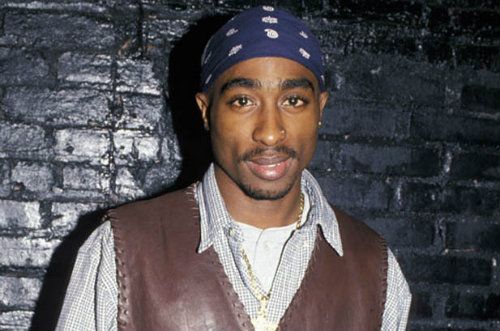For nearly two decades, drug lord James Rosemond, a/k/a “Jimmy Henchman,” denied accusations of his involvement in the near-fatal 1994 ambush of rap star Tupac Shakur at New York’s Quad Recording Studios that marked a pivotal moment in American pop history.
The attack on Tupac triggered a bicoastal rampage that played out in songs and videos generating billions of dollars for global music corporations and left a trail of body bags from Manhattan to Beverly Hills, culminating in the murders of both Tupac and his nemesis, the Notorious B.I.G.
Before he was assassinated, Tupac recorded a song called “Against All Odds,” in which he blamed Rosemond for orchestrating the assault at the Quad:
“Jimmy Henchman. . .
[You] set me up, wet me up… stuck me up.
But you never shut me up.”
Now, new evidence implicates Rosemond in the crime — facts recently divulged by an unlikely eyewitness, never previously interviewed by police: Rosemond himself.
Rosemond secretly admitted to involvement in Tupac’s ambush during one of nine “Queen For A Day” proffer sessions with the government last autumn, court transcripts show. (In such sessions, suspects under investigation choose to enter an agreement with the government to confess knowledge of certain crimes with the agreement that the information won’t be used to prosecute them.) His confession unfolded as he was trying to carve out a cooperation deal that might lead to a reduced sentence, according to federal prosecutors.
During the opening arguments of Rosemond’s trial, his lawyer denied that the defendant had anything to do with Tupac’s ambush and berated a March 17, 2008 Los Angeles Times article that blamed him for the assault, blasting the article as “utterly false.”
But within moments, prosecutors complained to the judge about the veracity of the defense counsel’s accusations.
“If [Rosemond’s attorney] is going to argue that this was a fabricated article, it’s the government’s position that we can put in the defendant’s own admission about that particular shooting,” the prosecutor said. “In saying it is not true, when in fact it is true, the government should be able to rebut that argument that he’s making, [and introduce] that the defendant actually admitted to this 1994 shooting.”
The revelation surfaced May 14 during a sidebar in the same Brooklyn federal court where Rosemond was later convicted of operating a multimillion-dollar crack ring that moved thousands of kilos of drugs and dirty cash between Los Angeles and New York. Twelve jurors took only two days to issue a unanimous verdict, convicting him of all 13 counts with which he was charged.
Prosecutors proved that couriers working for Rosemond delivered massive volumes of drugs, cash and machine guns in music crates to recording studios and record labels owned by or affiliated with Vivendi’s Universal Music Group, the largest music corporation in the world.
Rosemond apparently came clean about his involvement in Tupac’s ambush shortly after his former best friend, Dexter Isaac, stepped forward last summer to publicly confess that he had led the attack on Shakur in 1994. Isaac released a statement on June 16, 2011 to allhiphop.com, saying it was Rosemond who had paid him to rob and pistol-whip Tupac:
“In 1994, James Rosemond hired me to rob 2Pac at the Quad Studio. He gave me $2,500, plus all the jewelry I took, except for one ring, which he wanted for himself. It was the biggest of the two diamond rings that we took. He said he wanted to put the stone in a new setting for his girlfriend at the time, Cynthia Reed. I still have as proof the chain that we took that night in the robbery.”
Rosemond, who already faces life in jail for his drug conviction, will never be charged for his role in the 1994 ambush on Shakur, which was classified by NYPD as a robbery. Nobody will. In New York, the statute of limitations on robbery is seven years, which means the time to prosecute anyone for the Quad case expired 11 years ago. No one will ever go to jail for attacking Tupac: Not Jimmy. Not Dexter, nor any of his other henchmen.
Nevertheless, rap’s longest running crime mystery has finally been solved — and pretty much the way my March 2008 LA Times article reported it.
My piece, titled “An Attack on Tupac Shakur Launched a Hip-Hop War,” was based on exclusive interviews with the men who robbed and beat Shakur, who had never before spoken to a reporter, and with other New York gangsters familiar with the attack — all of whom verified Tupac’s account of who had set him up. The report was accompanied by FBI-302s — investigative reports I had obtained from a case file in a Florida court months after finishing my reporting, official documentation that supported some of what my interviewed sources had told me earlier.
Eight days after my story was published, the FBI-302s were identified as fakes by thesmokinggun.com. Immediately after the 302s were exposed as fakes, Rosemond accused me of fabricating the documents to defame him. I did nothing of the sort — and he knew it.
Nevertheless, I accepted responsibility for being duped by the fake 302s and apologized for my error in a front-page follow-up the morning after thesmokinggun.com piece broke. The only thing I apologized for was including the fake documents. I never said what I wrote was wrong. It was true. The sources on which I based by story were accurate. Of this I was certain back then.
I still am. (See my previous story for the Voice about Tupac, Rosemond, and the LA Times.)
Last month in court, Rosemond’s attorney told the jury that my story was “proven untrue” and that the LA Times had “retracted the piece in a very prominent way.” He boasted that the newspaper had been forced to pay “Rosemond $250,000 for damaging his reputation.” The attorney also went on to say that the LA Times “fired Chuck Philips for writing a story with reckless regard of the truth.”
The Times purged my article from its online archive on April 7, 2008 — immediately after issuing a caustic retraction attacking it, me, and my reporting. In an ironic twist, the controversial piece was resurrected last month as evidence in U.S.A. v. James Rosemond: Exhibit No. 1 in Motion 100 of Case No. 1:11-CR-00424JG. (Anyone curious can read it in the federal court file). READ MORE
[via village voice]
DOWNLOAD ON DMS



